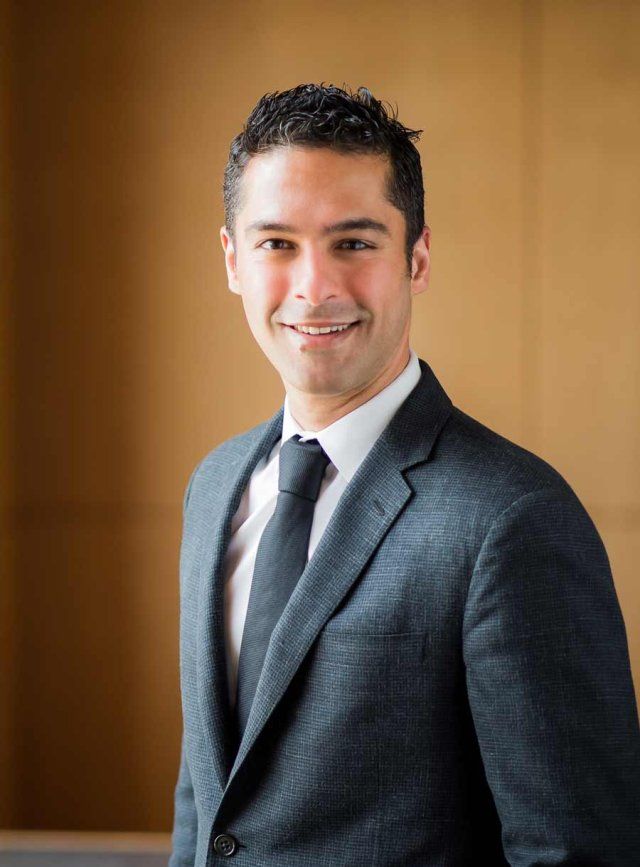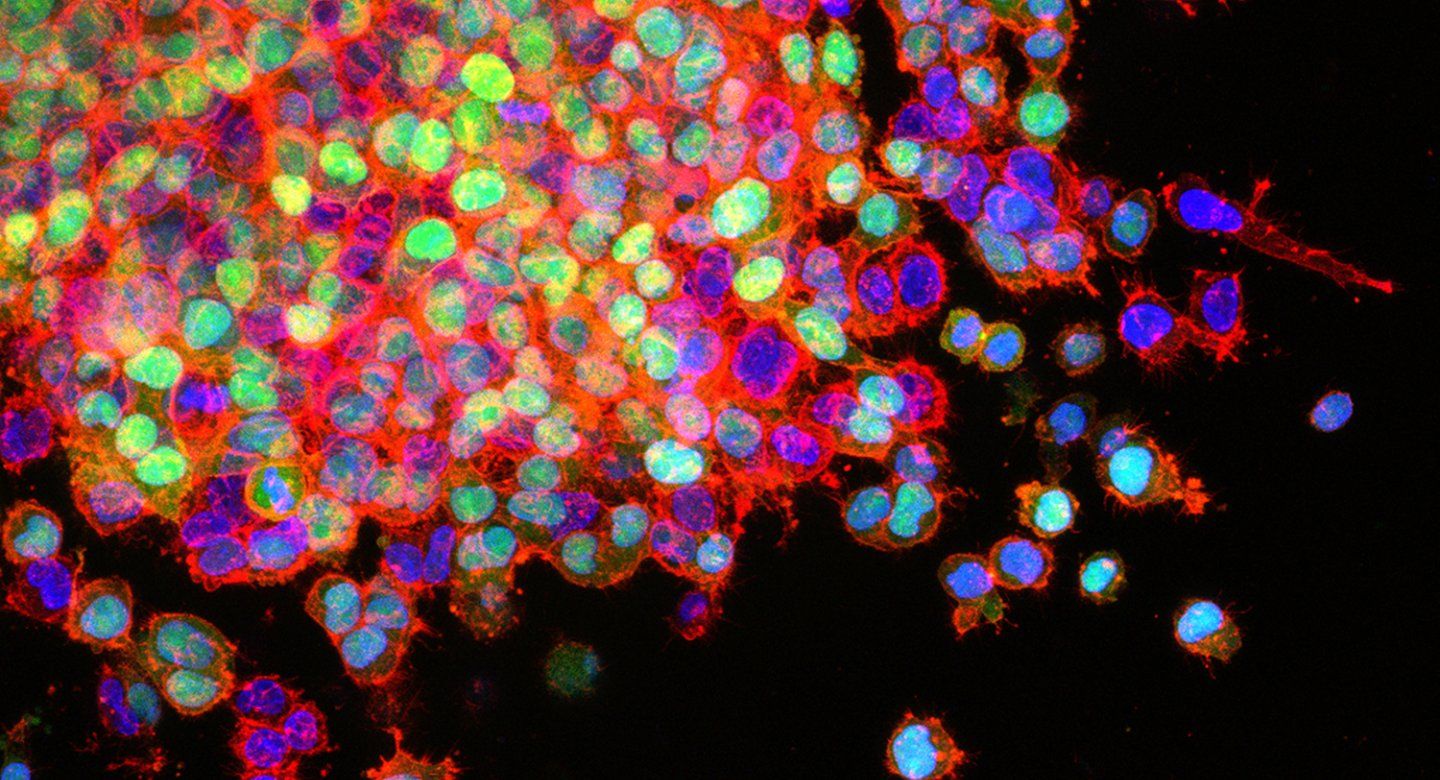Powerful New Mini Microscopic Will Enable Precision Cancer Surgery
UCSF’s Mekhail Anwar wins up to $15 million from ARPA-H to develop a next-generation miniature scanner powerful enough to detect individual cancer cells during surgery.
Even when cancer surgery goes well, it’s far from guaranteed that all the cancer has been removed. The excised tumor is sent to a pathology lab, which analyzes it under a microscope to estimate how much of the tumor may have been left behind.
And what’s left behind could grow back into deadly cancer, forcing patients into further surgeries, radiation or chemotherapy.
But someday, the pathology lab, microscope and all, might fit onto a computer chip the size of a postage stamp. It could give surgeons the ability to scan for errant cancer cells during a surgery and remove them on the spot.
A team of scientists, engineers and clinicians from UC San Francisco and UC Berkeley recently won an up to $15.1 million award from the Advanced Research Projects Agency for Health (ARPA-H) to develop such a technology, dubbed VISION (Versatile Chip-Scale NIR-II Imager for Single Cell Intraoperative Optical Navigation). The ARPA-H funding will support the project for up to five years.
One of nine projects funded by ARPA-H’s new Precision Surgical Interventions (PSI) program, and the latest in the Biden Cancer Moonshot, VISION will fuse advances in cancer diagnostics, molecular imaging and optics into a device that fits seamlessly into modern surgical practices.
“Cancer surgeons face a daunting task, trying to safely eliminate as much of a tumor as possible,” said Mekhail Anwar, MD, PhD, project lead and professor of radiation oncology at UCSF. “Finding any lingering cancer cells is like flying swiftly over a dense forest, looking for a single flower hidden on the forest floor.”
With VISION, the team intends to “bring the capabilities of big microscopes directly into patients,” according to Anwar, who also holds a joint appointment in the UC Berkeley Department of Electrical Engineering and Computer Sciences.
The device – an array of thousands of pixel-sized sensors – will be paired with molecular labels that can distinguish between cancerous and healthy cells in a patient. These labels will be amplified by tumor cells themselves and emit near-infrared light, which can be seen even through a few millimeters of overlying tissue.
“With the Precision Surgical Interventions program, we're seeking to fundamentally change how surgery is done,” said Ileana Hancu, PhD, ARPA-H PSI Program Manager. “PSI and its technical performer teams are committed to developing tools that reduce the rate of reoperations or accidental damage to critical structures.”
A feat of molecular, electrical and optical engineering
While cancer surgery today is less invasive than in the past, surgeons still rely heavily on bulky lenses and a trained eye to guide the scalpel around a tumor. In 1 in 10 cancer surgeries overall – and up to 1 in 4 breast cancer surgeries and 1 in 3 prostate cancer surgeries – enough cells remain for the cancer to grow back.
The VISION scanner, on the other hand, is placed directly onto exposed tissue, where it can detect cancer cells that have been tagged with molecular labels to make them stand out. Anwar and co-investigators Matthew Cooperberg, MD, from UCSF, and Ali Niknejad, PhD, from UC Berkeley, recently demonstrated that the VISION scanner handily detects tumors in animal models.
To maximize the impact of VISION, the team is continuing to improve on each element of the technology, starting with the molecular labels used to reveal cancer cells. These labels, which are being developed further by UCSF’s Charly Craik, PhD, and Mike Evans, PhD, will work across different types of cancers by binding to enzymes that are unique to cancer.
“On their own, these pan-cancer markers will represent a sea change in how we unmask cancer cells in the human body,” Anwar said. “We’re initially going to pilot them in prostate and breast cancer, but the goal is for them to be broadly applicable.”
Layered on top of these markers will be another chemical that emits near-infrared light, which passes through human tissue.
This chemical, under development by Bruce Cohen, PhD, at Lawrence Berkeley National Laboratory, will enable surgeons to get a clear view of cancer cells in the tumor bed that remains after a tumor is removed, as well as others that might be hiding underneath tissue or buried in lymph nodes – which are often the gateway to cancer spreading beyond the original tumor.
The VISION scanner itself will use new technology to “see” individual cancer cells through a thin, microfabricated imager and relay the information to surgeons. To sharpen the image and move towards 3D imaging in an ultra-compact form factor, the system will include features of a “lensless microscope,” under development in the UC Berkeley lab of Laura Waller, PhD.
The strength of VISION is its fusion of these engineering approaches in pursuit of a lofty but tangible goal: much more successful cancer surgery.”
Mekhail Anwar, MD, PhDProject lead and UCSF professor of radiation oncology
Shepherding new tech into the operating room
The final hurdle for the VISION project will be its performance during actual surgeries and its impact on patients. UCSF cancer surgeons Matt Cooperberg, MD, Carlos Corvera, MD, Jasmine Wong, MD, along with pathologists Ron Balassanian, MD, and Brad Storr, MD are all helping the team design a device that can be easily adopted by surgeons.
The data coming from VISION will need some parsing to make sense to surgeons in the operating room. Bespoke software will translate information from the scanner into potential actions for the surgeon to consider and outline important areas in the body for the surgeon either to target or to avoid.
“In the future, surgeons will insert this probe down a standard port and scan around everywhere,” Anwar said. “They’ll scan areas they aren’t sure they want to remove; they’ll make judgments about tradeoffs between taking extra tissue versus avoiding side effects. And VISION will give them detailed, quantitative information about each decision.”
With multiple legs of the VISION project already in place plus the ARPA-H funding, the scientists believe the technology will soon make its way to patients.
“With PSI, we aim to reduce surgical errors significantly and achieve better health outcomes across cancer and other diseases,” said ARPA-H Director Renee Wegrzyn, PhD. “Surgical procedures are often the first treatment option for some 2 million Americans diagnosed with cancer each year. This lack of precision can lead to repeat surgeries, harder recoveries, cancer recurrence and higher health care costs. Our hope is to advance cancer surgery so that we remove cancer the first time – and every time.”
